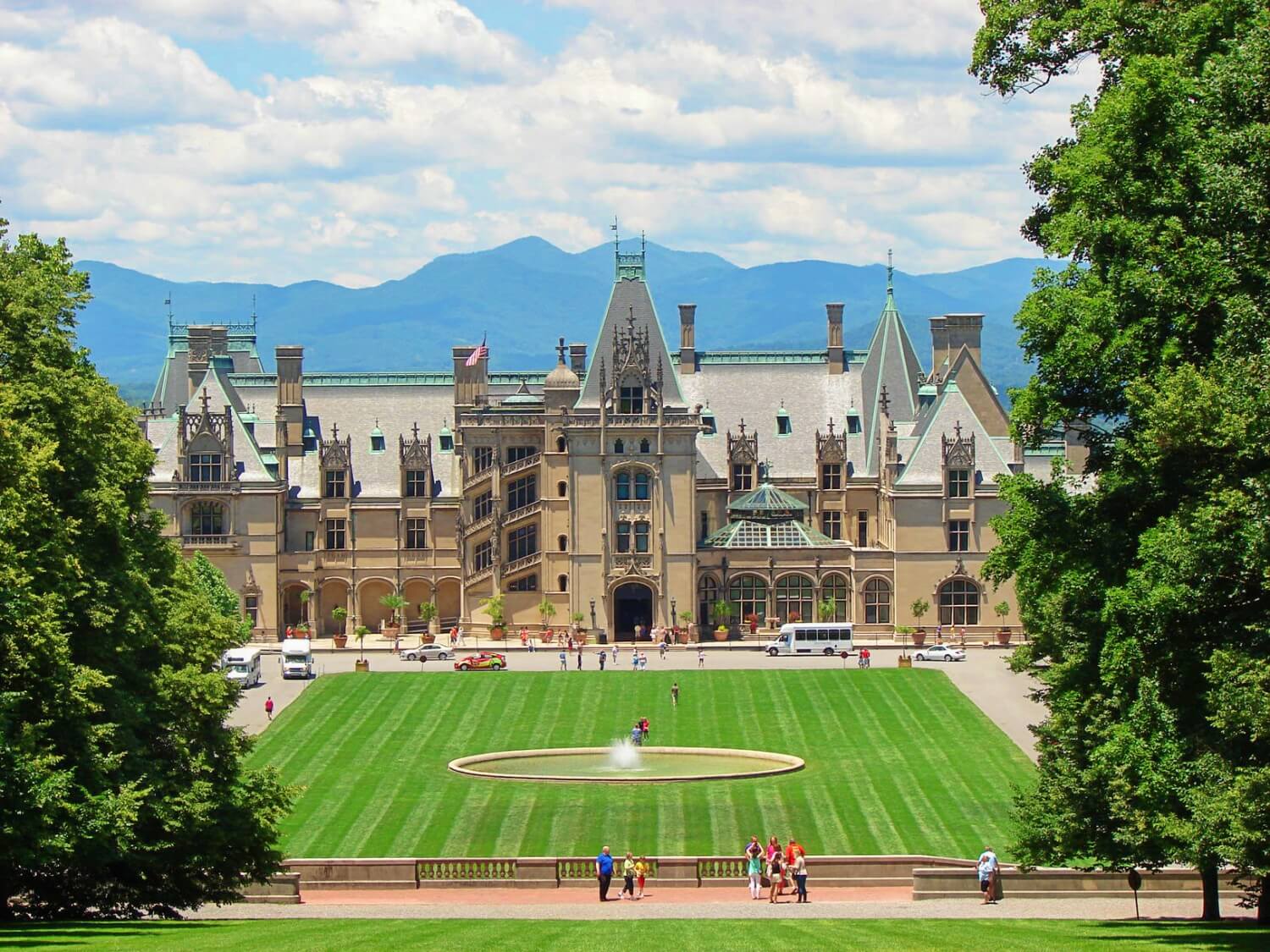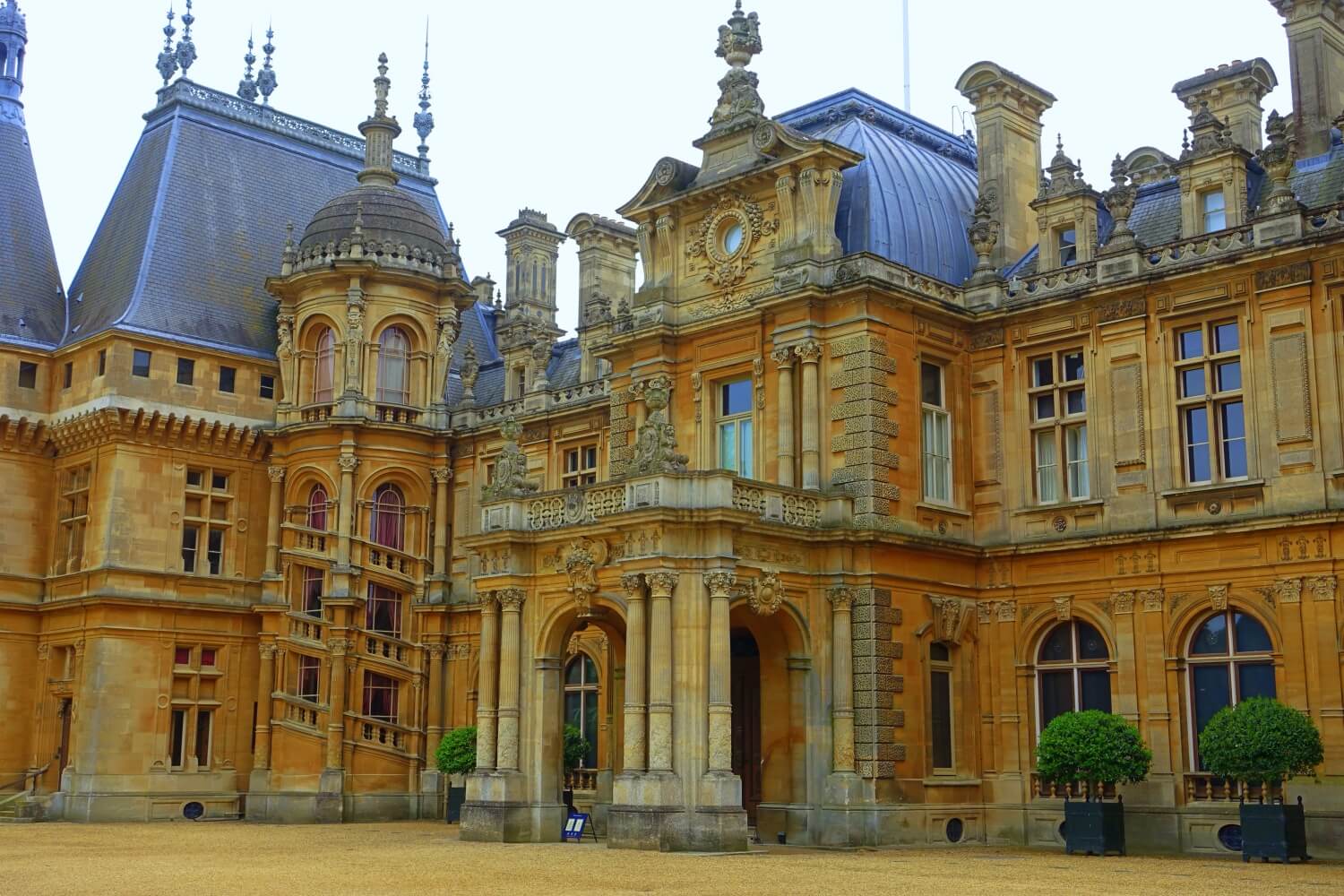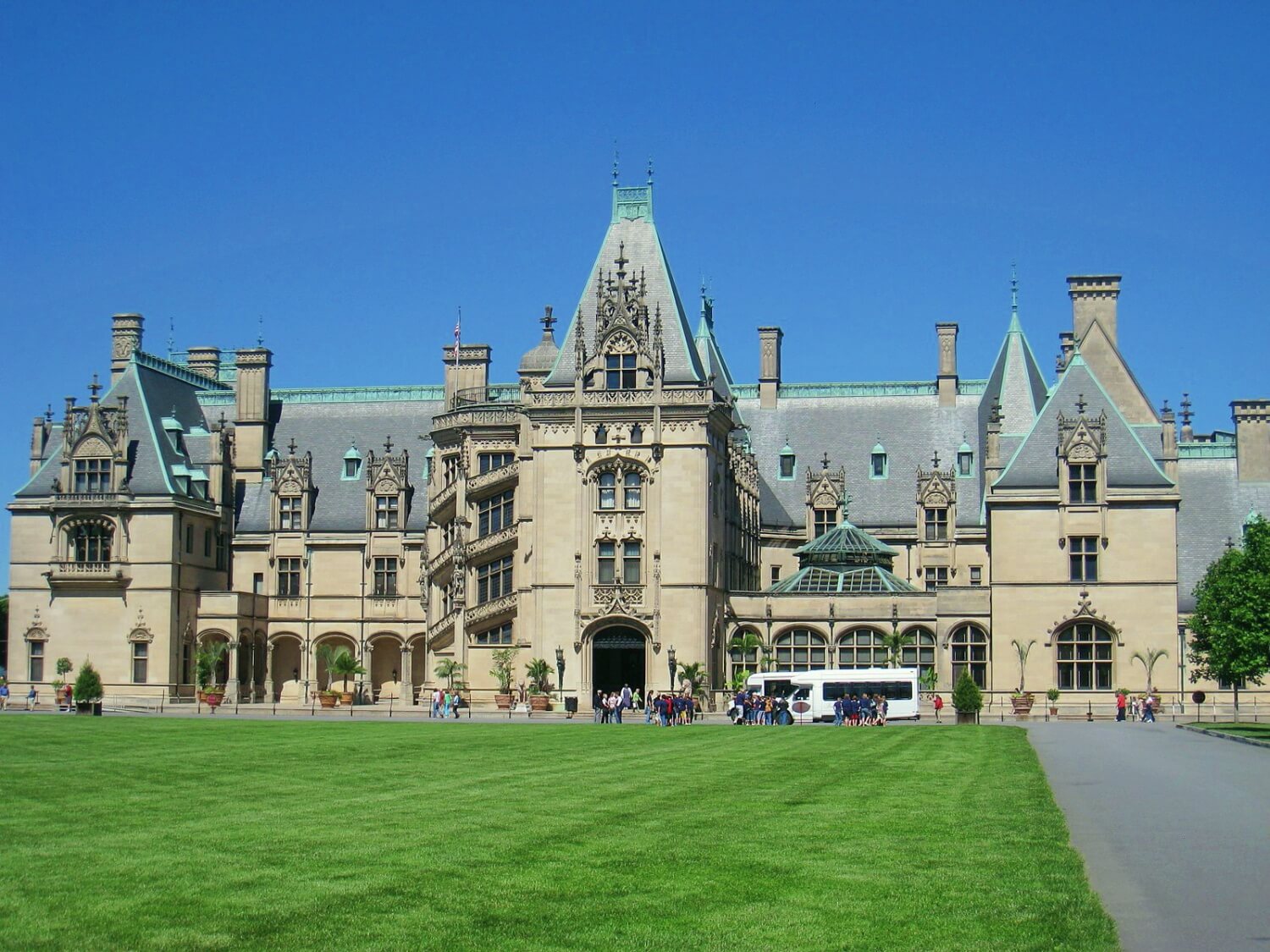Biltmore Estate
Buncombe County North Carolina Unites States
castle, chateau
Biltmore Estate is a historic house museum and tourist attraction in Asheville, North Carolina
Previous names
Biltmore Estate
Description
Biltmore Estate is a historic house museum and tourist attraction in Asheville, North Carolina. Biltmore House, the main residence, is a Châteauesque-style mansion built for George Washington Vanderbilt II between 1889 and 1895 and is the largest privately owned house in the United States, at 178,926 square feet (16,622.8 m2) of floor space (135,280 square feet of living area). Still owned by George Vanderbilt's descendants, it remains one of the most prominent examples of Gilded Age mansions.
History
In the 1880s, at the height of the Gilded Age, George Washington Vanderbilt II began to make regular visits with his mother, Maria Louisa Kissam Vanderbilt, to the Asheville area. He loved the scenery and climate so much that he decided to build a summer house in the area, which he called his "little mountain escape". His older brothers and sisters had built luxurious summer houses in places such as Newport, Rhode Island, the Gold Coast of Long Island, and Hyde Park, New York.
Vanderbilt named his estate Biltmore, combining De Bilt (his ancestors' place of origin in the Netherlands) with more (mōr, Anglo-Saxon for "moor", an open, rolling land). Vanderbilt bought almost 700 parcels of land, including over 50 farms and at least five cemeteries; a portion of the estate was once the community of Shiloh. A spokesperson for the estate said in 2017 that archives show much of the land "was in very poor condition, and many of the farmers and other landowners were glad to sell."
Construction of the house began in 1889. In order to facilitate such a large project, a woodworking factory and brick kiln, which produced 32,000 bricks a day, were built onsite. A three-mile railroad spur was constructed also to bring materials to the building site. Construction on the main house required the labor of about 1,000 workers and 60 stonemasons. Vanderbilt went on extensive trips overseas to purchase decor as construction on the house was in progress. He returned to North Carolina with thousands of furnishings for his newly built home, including tapestries, hundreds of carpets, prints, linens, and decorative objects, all dating between the 15th century and the late 19th century. Among the few American-made items were the more practical oak drop-front desk, rocking chairs, a walnut grand piano, bronze candlesticks, and a wicker wastebasket.
George Vanderbilt opened his opulent estate on Christmas Eve of 1895 to invited family and friends from across the country, who were encouraged to enjoy leisure and country pursuits. Notable guests to the estate over the years included novelists Edith Wharton and Henry James, ambassadors Joseph Hodges Choate and Larz Anderson, and U.S. presidents. George married Edith Stuyvesant Dresser in 1898 in Paris, France; their only child, Cornelia Stuyvesant Vanderbilt, was born at Biltmore in the Louis XV room in 1900, and grew up at the estate.
Affected by Congressional passage of a new income tax and the expensive maintenance of the estate, Vanderbilt initiated the sale of 87,000 acres (35,000 ha) to the federal government. After Vanderbilt's unexpected death in 1914 of complications from an emergency appendectomy, his widow completed the sale. She carried out her late husband's wish that the land remain unaltered, and that property became the nucleus of the Pisgah National Forest. Overwhelmed with running such a large estate, Edith began consolidating her interests and sold Biltmore Estate Industries in 1917 and Biltmore Village in 1921. She intermittently occupied the house, living in an apartment created in the former Bachelors' Wing, until the marriage of her daughter Cornelia to John Francis Amherst Cecil in April 1924. The Cecils had two sons, who were born at Biltmore in the same room as their mother had been.
In an attempt to bolster the estate's financial situation during the Great Depression, Cornelia and her husband opened Biltmore to the public in March 1930 at the request of the City of Asheville, which hoped the attraction would revitalize the area with tourism. Biltmore closed during World War II. In 1942, 62 paintings and 17 sculptures were moved to the estate by train from the National Gallery of Art in Washington, D.C. to protect them in the event of an attack on the United States. The Music Room on the first floor was never finished, so it was used for storage until 1944, when the possibility of an attack became more remote. Among the works stored were the Gilbert Stuart portrait of George Washington and works by Rembrandt, Raphael, and Anthony van Dyck. David Finley, the gallery director, was a friend of Edith Vanderbilt and had stayed at the estate.
After the Cecils divorced in 1934, Cornelia left the estate never to return; however, John Cecil maintained his residence in the Bachelors' Wing until his death in 1954. Their eldest son, George Henry Vanderbilt Cecil, occupied rooms in the wing until 1956. At that point Biltmore House ceased to be a family residence; it was operated as a historic house museum.
Their younger son William A. V. Cecil, Sr. returned to the estate in the late 1950s and joined his brother to manage the estate when it was in financial trouble. They worked to make it a profitable and self-sustaining enterprise as their grandfather had envisioned. William Cecil eventually inherited the estate upon the death of their mother, Cornelia, in 1976. His brother George Cecil inherited the then more profitable dairy farm, which was split off into Biltmore Farms.
In 1995, while celebrating the 100th anniversary of the estate, William Cecil turned over control of the company to his son, William A. V. Cecil, Jr. The Biltmore Company is privately held. Of the 8,000 acres that make up Biltmore Estate, only 1.36 acres are in the city limits of Asheville, and the Biltmore House is not part of any municipality.
The estate was designated a National Historic Landmark in 1963, and remains a major tourist attraction in Western North Carolina, with 1.4 million visitors each year.
After the death of William A. V. Cecil in October 2017 and his wife Mimi Cecil in November, their daughter Dini Pickering is serving as board chair and their son Bill Cecil as CEO. The house is assessed at $157.2 million, although due to an agricultural deferment, county property taxes are paid on only $79.1 million of that.
Park and landscape
Vanderbilt envisioned a park-like setting for his home and employed landscape architect Frederick Law Olmsted to design the grounds. Olmsted was not impressed with the condition of the 125,000 acres (195 sq mi; 510 km2) and advised having a park surround the house, establishing farms along the river, and replanting the rest as a commercial timber forest, a plan to which Vanderbilt agreed. Gifford Pinchot and later Carl A. Schenck was hired to manage the forests, with Schenck establishing the first forestry education program in the U.S. in 1898, the Biltmore Forest School, on the estate grounds.
Another important aspect of the landscaping was the intentionally rustic four-mile (5 km) Approach track that began at the brick quoined and pebbledash stucco Lodge Gate at the edge of Biltmore Village and ended at the sphinx-topped stone pillars at the Esplanade. In between, the lane was densely planted along the borders with natural and uncultivated-looking foliage and shrubbery to provide a relaxing journey for guests. Olmsted made sure to incorporate 75 acres (30 ha) of formal gardens, which had been requested by Vanderbilt for the grounds directly surrounding the house. He constructed a Roman formal garden, a formal garden, a bush and tulip garden, water fountains, and a conservatory with individual rooms for palms and roses. There was also a bowling green, an outdoor tea room, and a terrace to incorporate the European statuary that Vanderbilt had brought back from his travels. At the opposite end of the Esplanade is the Rampe Douce (French for “gentle/soft ramp”), a graduated stairway zigzagging along a rough-cut limestone wall that leads to the grassy slope known as the Vista, topped with a statue of Diana, the goddess of the hunt.
Water was an important aspect of Victorian landscaping, and Olmsted incorporated two elements for the estate: the Bass Pond created from an old creek-fed millpond and the Lagoon. Each was used for guest recreation such as fishing and rowing. To supply water for the estate, Olmsted engineered two reservoirs. One was a spring-fed man-made lake on nearby Busbee Mountain. The other was a man-made, brick-lined reservoir, located behind the statue of Diana in the Vista, at an elevation of approximately 266 feet (81 m) above the Esplanade.
Estate
Vanderbilt's idea was to replicate the working estates of Europe. He asked Richard Morris Hunt and Frederick Law Olmsted to design a village with architecturally compatible buildings and picturesque landscaping. He intended it to be a source of income through rental cottages, a place to help carry out philanthropic programs, and an easy point of access between the estate and the train station. The result was Biltmore Village. The village included rental cottages complete with plumbing and central heating, a post office, shops, doctor's office, school, and a church, known today as the Cathedral of All Souls.
Intending the estate to be self-supporting, Vanderbilt set up scientific forestry programs, poultry farms, cattle farms, hog farms, and dairy. His wife, Edith, also enthusiastically supported agricultural reform and promoted the establishment of a state agricultural fair. In 1901, the Vanderbilts provided financial assistance to Biltmore Industries, started by Biltmore Village resident Eleanor Vance, which taught young people how to make hand-carved furniture, woven baskets, homespun wool fabric, and more.
The estate today covers approximately 8,000 acres (13 sq mi; 32 km2) and is split in half by the French Broad River. The estate is overseen by The Biltmore Company, a trust set up by the family. The company is a large enterprise that is one of the largest employers in the Asheville area. Restaurants were opened in 1979 and 1987, and four gift shops in 1993. The former dairy barn was converted into the Biltmore Winery in 1985. The 210-room luxury hotel, named The Inn on Biltmore Estate, opened in 2001. In 2010, the estate opened Antler Hill Village, consisting of gift shops and restaurants, as well as a remodeled winery, and connected farmyard. In 2015, the Village Hotel on Biltmore Estate, a more casual option to The Inn with 209 rooms, was opened in Antler Hill Village.
Useful information
Free
76.00 USD
Children (0-9): free
Children: 12.00 USD
Youth: 44.00 USD
- WC/WC for the disabled
- Lift
- WiFi
- Concerts and events
- Accessible for wheelchairs
External links



